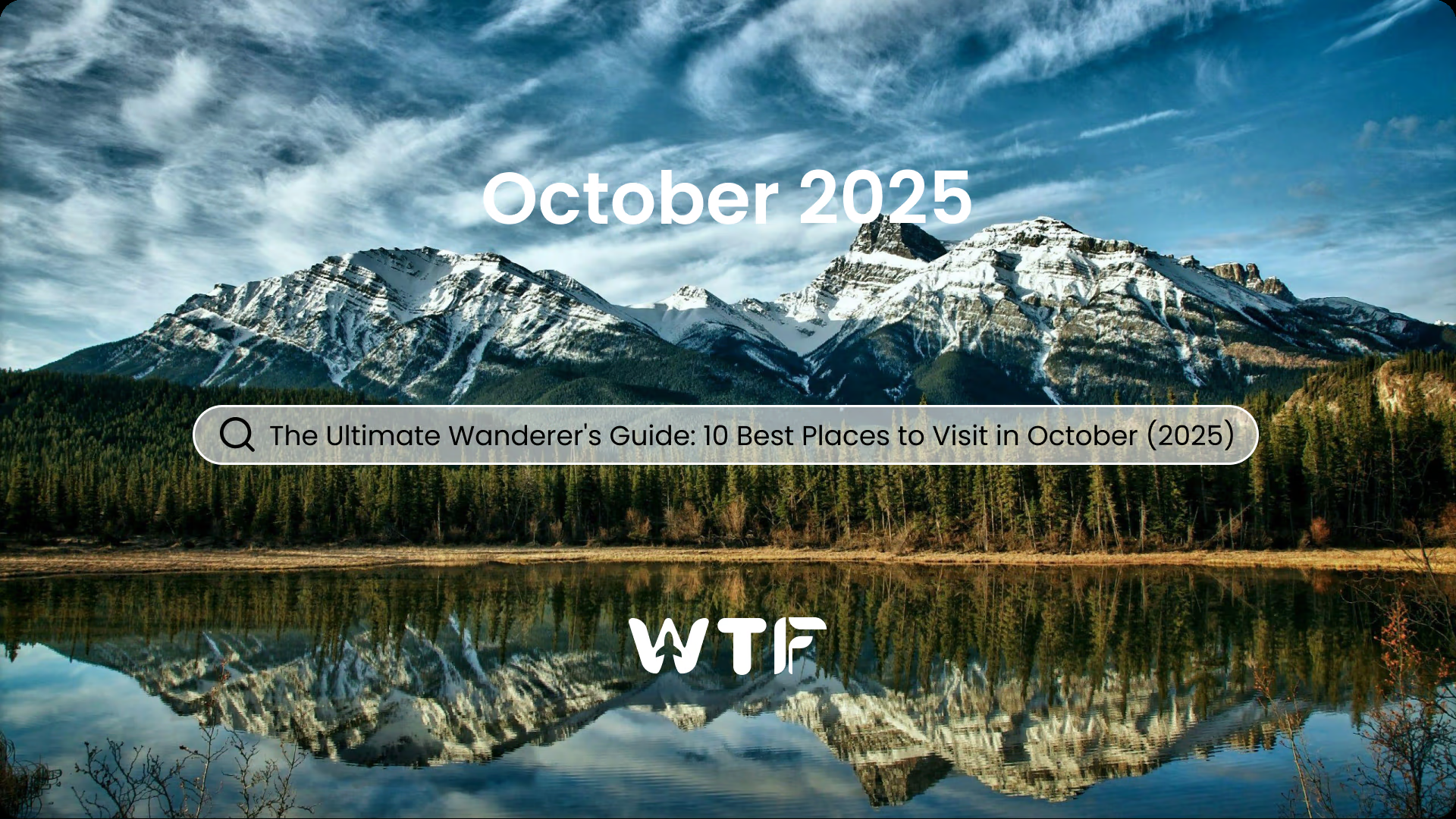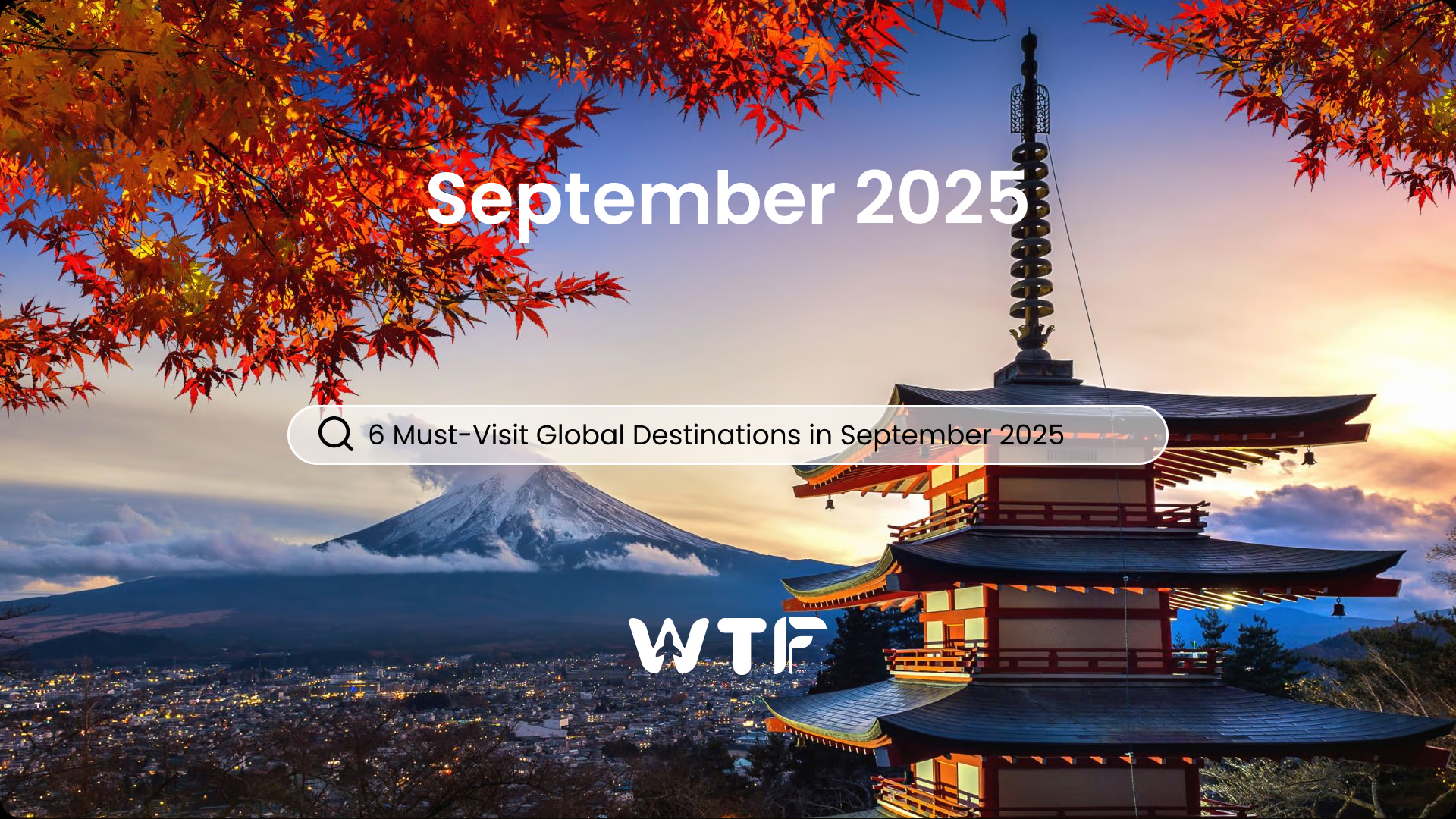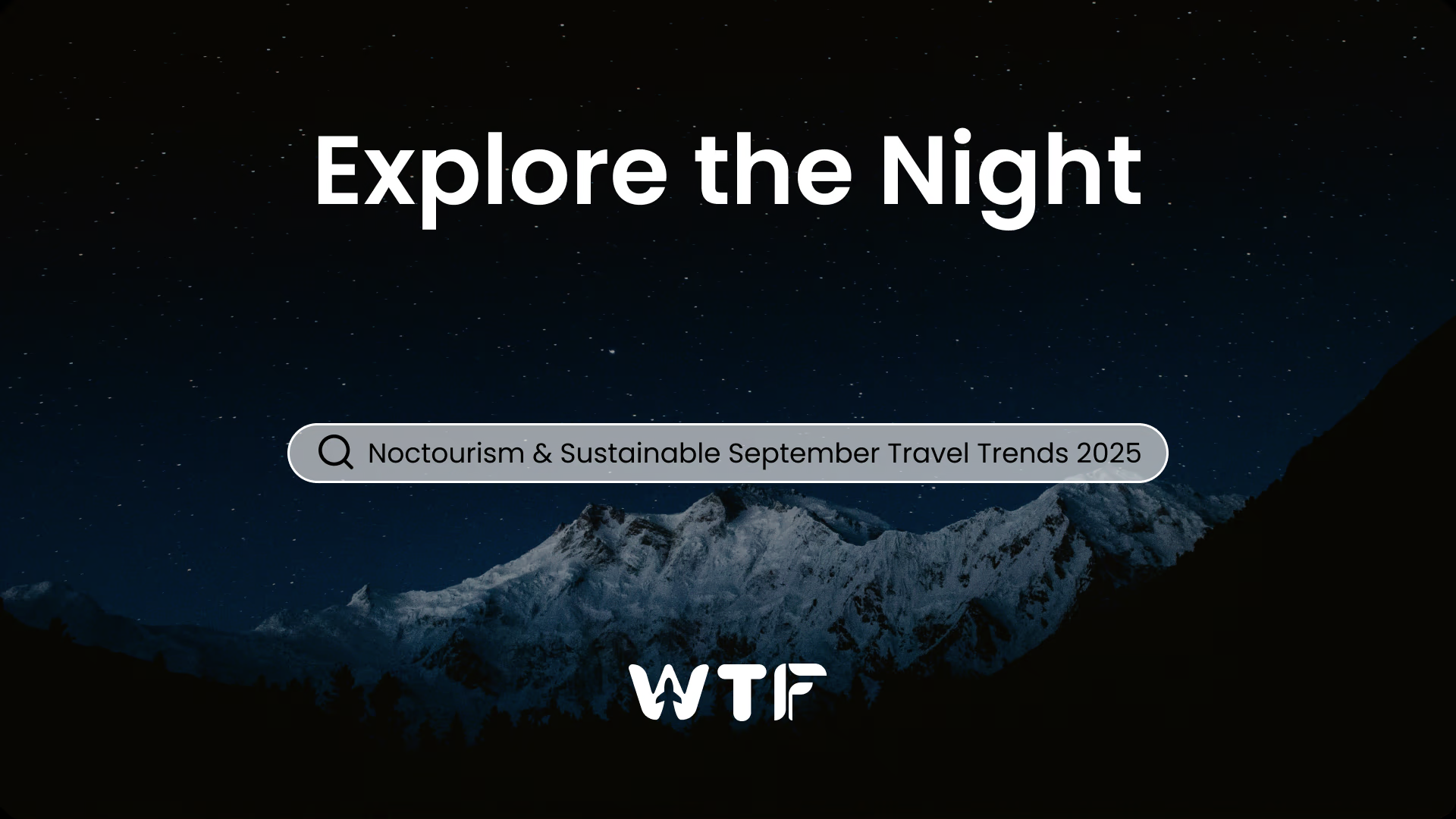Are you curious about Brazil? You’re not alone! This captivating country, with its rich cultural heritage, diverse landscapes, and unique way of life, often leaves travelers and enthusiasts with a myriad of questions. From the Amazon Rainforest to the rhythms of samba, Brazil is a land of wonder and intrigue.
In this blog, we’re here to answer all your burning questions about Brazil, whether you’re planning a trip, seeking to understand its cultural nuances, or simply eager to explore this vibrant nation from the comfort of your home. We’ve gathered the most common queries and will take you on a virtual journey to uncover the fascinating answers that reveal the heart and soul of Brazil.
So, whether you’re wondering about the best time to visit, the top must-see destinations, or even the secrets of preparing a delicious feijoada, join us as we dive deep into the world of Brazil and provide you with the insights and knowledge you need to fully appreciate this remarkable country. Get ready to satisfy your curiosity, and let’s embark on a quest to unravel the mysteries and beauty of Brazil together.
Culture & Influence:
- Ancient Civilization:Brazil has a rich history of ancient civilizations dating back thousands of years. Before European colonization, various indigenous groups inhabited the region, including the Tupinambá, Guarani, and many others. These indigenous peoples had developed complex societies with unique languages, traditions, and knowledge of the diverse ecosystems in the Amazon rainforest. Notable ancient cultures like the Marajoara and the Tapajó lived in the Amazon Basin and created intricate pottery and earthworks. The Amazon region continues to reveal new archaeological discoveries, shedding light on the advanced knowledge and engineering skills of the indigenous people.
- Religious Significance:Brazil is known for its diverse religious landscape, shaped by centuries of cultural and spiritual fusion. The most prominent example of this syncretism is seen in Afro-Brazilian religions such as Candomblé and Umbanda. These religions blend African spiritual beliefs with Catholicism, resulting in vibrant and unique religious ceremonies and festivals. Additionally, Brazil is home to the world’s largest Roman Catholic population, with many historic churches and cathedrals scattered throughout the country. The annual Círio de Nazaré festival in Belém, Pará, is one of the most significant religious events in Brazil, attracting millions of pilgrims.
- History and Heritage:Brazil’s history is marked by a complex and multifaceted story. The country was initially colonized by the Portuguese in the early 16th century, and this period significantly influenced Brazilian culture and language. The era of colonial rule and the transatlantic slave trade left indelible marks on the nation. Slavery persisted in Brazil until 1888 when it was officially abolished. The abolition of slavery and the subsequent influx of European, African, and Asian immigrants have contributed to Brazil’s rich cultural diversity. In cities like Salvador, you can explore well-preserved colonial architecture and gain insights into the history of the African diaspora in Brazil. The preservation of historic sites, festivals, and traditions plays a crucial role in showcasing Brazil’s history and heritage.
- Modern Significance:In the modern era, Brazil is a global powerhouse with immense significance in various fields. As the largest country in South America and the fifth-largest in the world, Brazil plays a pivotal role in regional and international politics, economics, and environmental conservation. It’s known for its rich biodiversity, especially in the Amazon Rainforest, which is often referred to as the “Lungs of the Earth” due to its role in oxygen production and carbon sequestration. Economically, Brazil is a major player in agriculture, mining, and energy production, and it’s a member of the BRICS group of emerging economies. Additionally, Brazilian culture has a global impact, with its music, dance, and cuisine influencing people worldwide. The annual Rio Carnival is one of the most famous and colorful events in the world, drawing millions of visitors.
Exploring the Top 5 Must-Visit Tourist Destinations in Brazil
Brazil, the land of samba, breathtaking landscapes, and cultural diversity, offers travelers an array of mesmerizing destinations to explore. In this blog, we’ll take you on a journey to the top 5 tourist places in Brazil. We’ll delve into the significance and history of each place, their unique specialties, how to get there from the capital city using local transportation, and the delectable local foods you must savor along the way.
Rio de Janeiro: The Marvelous City: Rio de Janeiro is Brazil’s iconic city, known for its stunning landscapes, including Copacabana and Ipanema beaches. It has a rich history dating back to Portuguese colonization and was the capital of Brazil for nearly two centuries.
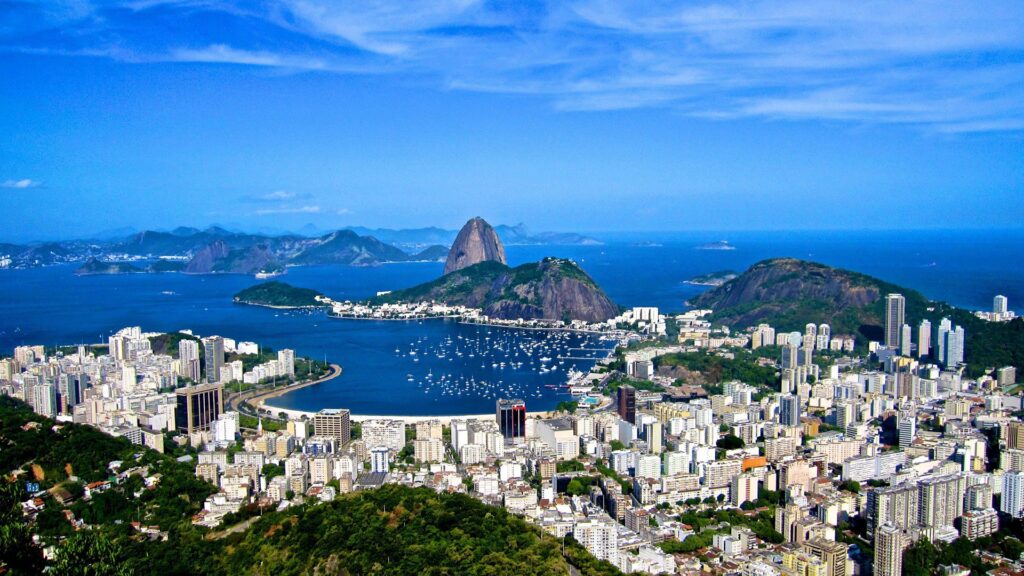
- Specialty: Rio is famous for the annual Rio Carnival, vibrant samba culture, and the awe-inspiring Christ the Redeemer statue.
- Getting There: From the capital city, Brasília, you can catch a direct flight to Rio de Janeiro. Local transport options include city buses and the metro. The cost varies depending on the mode of transport.
- Local Food: Try feijoada, a hearty black bean stew with pork, and don’t miss the coxinhas, savory fried pastries filled with chicken or cheese.
Iguazu Falls: The Waterfall Wonderland: Iguazu Falls, a UNESCO World Heritage site, boasts over 275 individual falls and is a natural wonder of the world. The falls straddle the border between Brazil and Argentina.

- Specialty: Witness the power of nature as you explore the falls and their lush surroundings. Take a boat tour to get up close to the cascades.
- Getting There: Fly from Brasília to Foz do Iguaçu, the gateway to the falls. Local transportation includes buses and taxis, and the cost varies.
- Local Food: Taste traditional Brazilian barbecue, known as churrascaria, and enjoy açaí, a popular Amazonian fruit, in various forms.
Salvador: A Taste of Afro-Brazilian Culture: Salvador, the capital of Bahia, is a city that showcases Brazil’s African and Portuguese influences. It has a rich history and is a UNESCO World Heritage site.
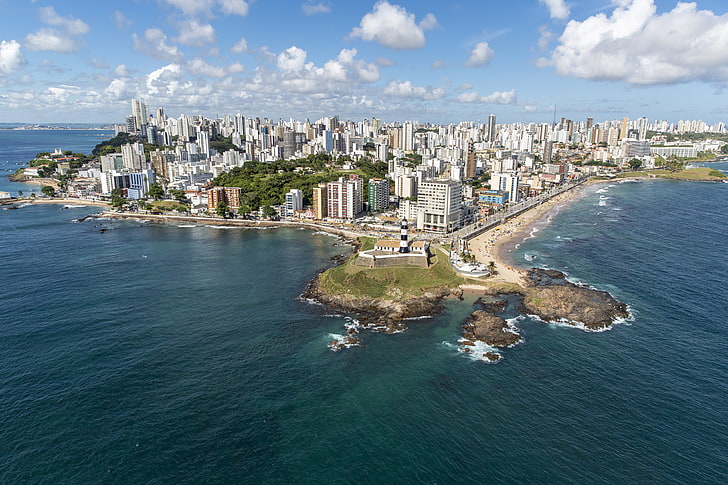
- Specialty: Explore the historic Pelourinho district with its colorful colonial architecture and experience the vibrant culture of Afro-Brazilian traditions.
- Getting There: Fly from Brasília to Salvador. The city has an extensive bus network and taxis. Costs may vary depending on your mode of transport.
- Local Food: Savor acarajé, deep-fried black-eyed pea cakes filled with shrimp, and moqueca, a flavorful seafood stew with coconut milk.
Manaus: Gateway to the Amazon Rainforest: Manaus, located deep in the Amazon Rainforest, is a bustling port city and an entry point for exploring the world’s largest tropical rainforest.
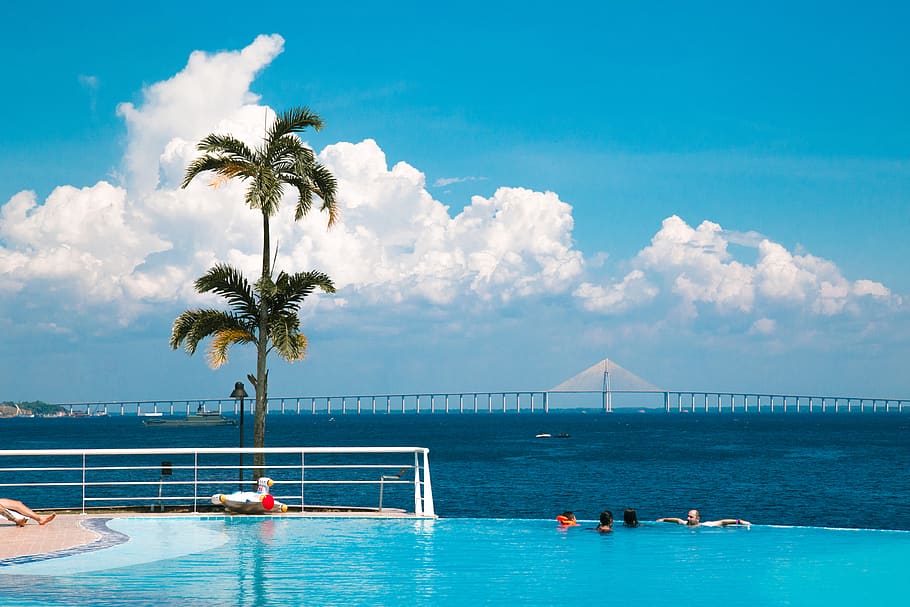
- Specialty: Discover the Amazon’s incredible biodiversity on guided jungle tours, and visit the historic Amazon Theatre.
- Getting There: From Brasília, book a flight to Manaus. Local transportation includes taxis and buses, with varying costs.
- Local Food: Try tambaqui, a local fish, prepared in various delicious ways, and taste exotic Amazonian fruits like cupuaçu and açaí.
Florianópolis: A Slice of Paradise: Florianópolis, an island off Brazil’s southern coast, is known for its picturesque beaches and charming colonial architecture.
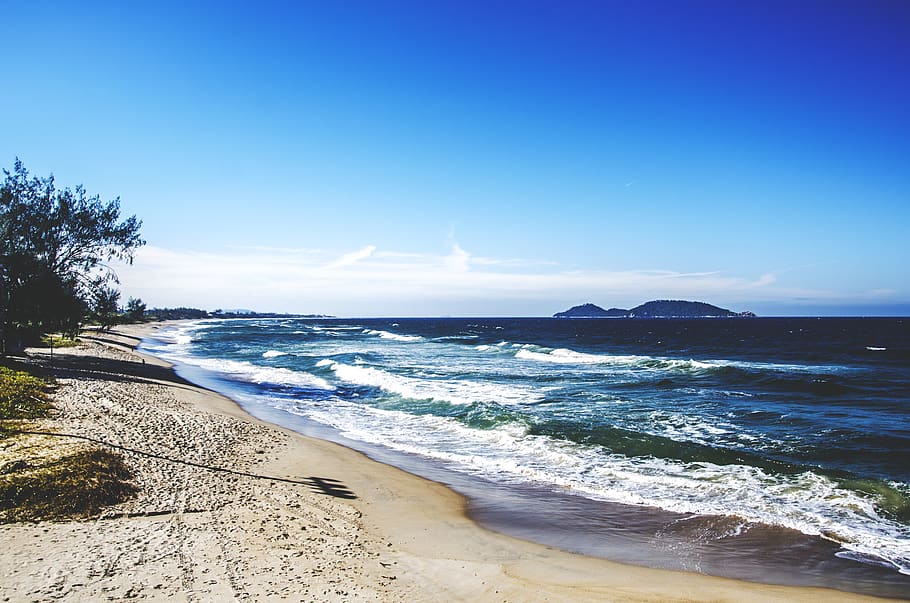
- Specialty: Experience a mix of stunning beaches, sand dunes, and preserved Atlantic Forest. Surfing and outdoor activities are popular here.
- Getting There: To reach Florianópolis from Brasília, take a domestic flight. On the island, local transportation includes buses and car rentals.
- Local Food: Indulge in seafood delicacies like shrimp stew (caldeirada de camarão) and oysters, often served fresh from the local lagoons.
These five incredible tourist destinations in Brazil offer a mix of history, natural beauty, cultural richness, and delectable local cuisine. With insights into their significance, how to reach them via local transport, and what culinary delights await you, you’re now equipped to plan an unforgettable Brazilian adventure. Whether you’re exploring the iconic streets of Rio de Janeiro, getting lost in the power of Iguazu Falls, immersing yourself in the Afro-Brazilian culture of Salvador, venturing into the heart of the Amazon in Manaus, or savoring the beach paradise of Florianópolis, each place promises a unique and memorable experience.
Exploring Brazil’s Hidden Treasures: 5 Unexplored Gems
Jalapão: The Brazilian Outback
Jalapão, often referred to as the Brazilian Outback, is a vast wilderness in the state of Tocantins. This untouched region is known for its unique landscapes, including vast dunes, oases, and crystal-clear springs. It’s a hidden paradise that’s still relatively unexplored by tourists.
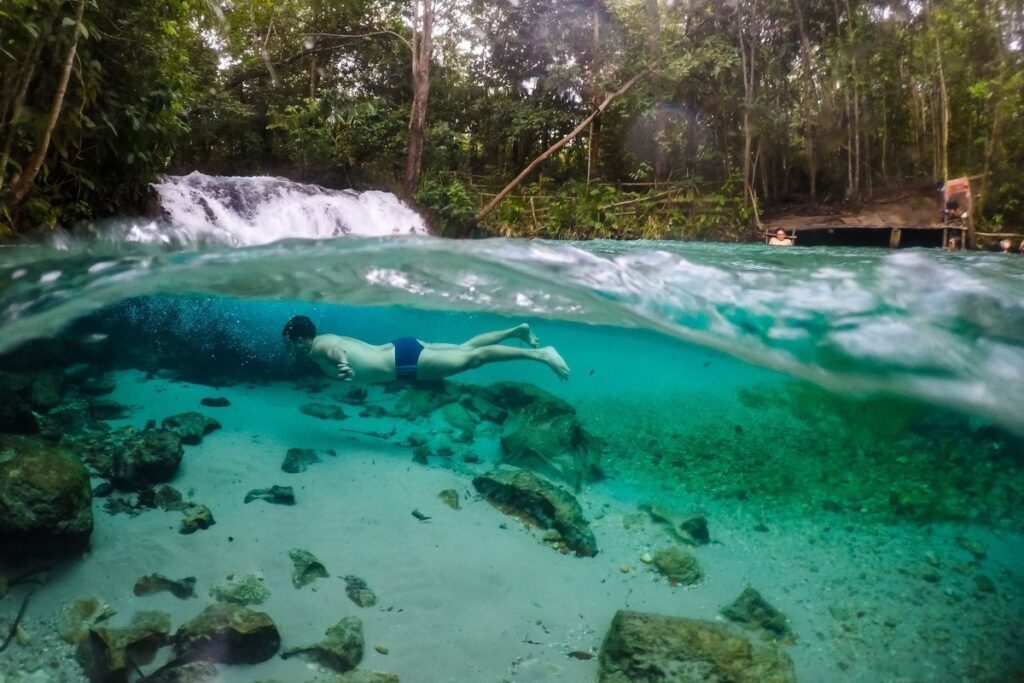
- Speciality: Jalapão is a place of natural wonder. Discover golden dunes, turquoise springs, and unique rock formations. Don’t miss the Fervedouro, a natural spring where you can float on its clear, bubbling waters.
- How to Get There: From Brasília, the capital city, you can take a flight or a long-distance bus to Palmas, the capital of Tocantins. From Palmas, you can book tours or rent a vehicle to explore Jalapão. The costs may vary depending on your choice of transportation.
- Local Food: Tocantins cuisine is a delightful mix of flavors. You can try dishes like “galinhada,” a chicken and rice dish, and sample treats made with the local “babaçu” nut.
Serra da Capivara: A Prehistoric Marvel
Serra da Capivara National Park, located in the state of Piauí, is a UNESCO World Heritage site known for its incredible concentration of prehistoric rock art. The park provides insight into the rich history of the earliest human settlements in the Americas.
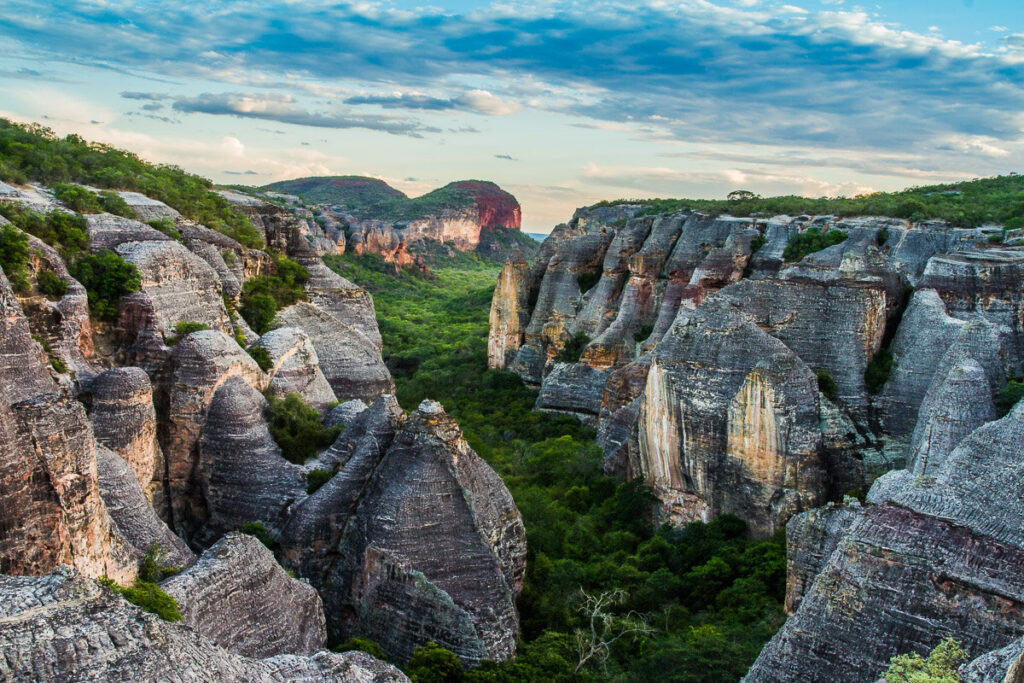
- Speciality: This hidden gem is a treasure trove of ancient rock paintings and archaeological sites. The park offers a unique opportunity to explore the history and artistry of the region’s indigenous people.
- How to Get There: From Brasília, you can take a domestic flight to Teresina, the capital of Piauí. From Teresina, it’s best to rent a vehicle or join a guided tour to reach Serra da Capivara. Costs can vary depending on your transportation choice.
- Local Food: Piauí cuisine features dishes like “arroz de cuxá,” a flavorful rice dish, and “carne de sol,” a delicious sun-dried beef.
Alter do Chão: The Caribbean of the Amazon
Alter do Chão, a peaceful village in the state of Pará, sits on the shores of the Tapajós River. It’s often referred to as the “Caribbean of the Amazon” due to its stunning white-sand beaches and clear turquoise waters.
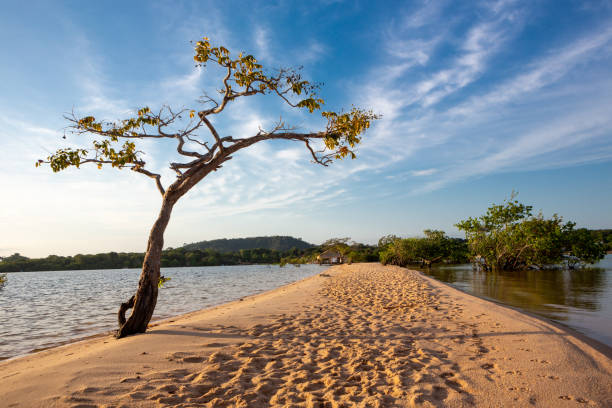
- Speciality: The village is a gateway to the unspoiled beauty of the Amazon rainforest. It’s the perfect place to relax on pristine beaches, explore the jungle, and experience the cultural richness of the riverside communities.
- How to Get There: To reach Alter do Chão from Brasília, you can take a domestic flight to Santarém, the nearest major city. From Santarém, you can reach Alter do Chão by bus, taxi, or boat, with varying costs.
- Local Food: Savor regional Amazonian dishes such as “tacacá,” a savory soup, and fresh river fish prepared in various styles.
Lençóis Maranhenses: The Desert of Lagoons
Lençóis Maranhenses National Park, situated in the state of Maranhão, is a unique desert landscape adorned with countless freshwater lagoons. It’s a stunning natural wonder that’s still off the beaten path for many travelers.

- Speciality: The park is famous for its surreal beauty, with turquoise lagoons nestled between vast sand dunes. It’s an excellent destination for hiking, swimming, and sandboarding.
- How to Get There: To reach Lençóis Maranhenses from Brasília, you can fly to São Luís, the capital of Maranhão. From São Luís, take a bus to the town of Barreirinhas, the gateway to Lençóis Maranhenses. Costs for transportation may vary.
- Local Food: Savor Maranhão’s signature dish, “arroz de cuxá,” a flavorful rice and herb dish, and enjoy fresh seafood like “caranguejo,” a local crab.
Chapada dos Veadeiros: The Mystical Plateau
Chapada dos Veadeiros, located in the state of Goiás, is a UNESCO World Heritage-listed area known for its incredible biodiversity and pristine natural beauty. The region is steeped in the history of the Kalunga people, descendants of escaped slaves who have lived here for centuries.
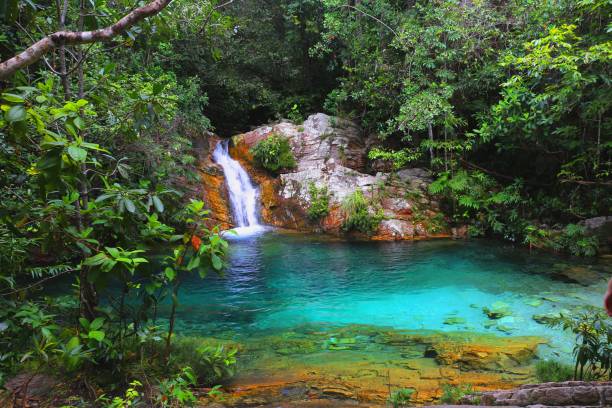
- Speciality: The park offers waterfalls, rock formations, and natural pools in a mystical setting. The Valley of the Moon, with its lunar-like landscape, is a must-visit.
- How to Get There: Take a flight from Brasília to the city of Brasília and then use local transportation options like buses to reach Alto Paraíso de Goiás, the gateway to Chapada dos Veadeiros.
- Local Food: Savor traditional Brazilian dishes and sample fruits like “pequi” and “araticum,” unique to the Cerrado region.
These hidden treasures in Brazil are waiting to be explored. Each destination offers a unique experience, from the untouched beauty of Jalapão to the prehistoric marvels of Serra da Capivara. With pristine beaches, freshwater lagoons, desert landscapes, and mystic plateaus, these unexplored gems are sure to leave you with unforgettable memories of Brazil. Don’t forget to savor the local cuisine, as each region has its own delicious specialties to offer.
Currency & Travel Tips
Currency: The official currency of Brazil is the Brazilian Real (BRL). It’s advisable to exchange some currency before your trip or withdraw money from ATMs in Brazil. Major credit and debit cards are widely accepted in cities, but it’s a good idea to carry some cash for smaller establishments or remote areas.
Here are some more travel tips for your visit to Brazil:
- Budget Accommodations: To save money on accommodations, consider staying in hostels, guesthouses, or pousadas, which are small family-run inns. These options are often more affordable than luxury hotels. In major cities like Rio de Janeiro and São Paulo, you can find budget-friendly hostels in neighborhoods like Santa Teresa, Ipanema, or Vila Madalena.
- Public Transport: Brazil has an extensive public transportation system. In cities, you can use buses and metro systems. While prices vary by city, public transport is generally affordable. Consider purchasing a transport card for convenience. Taxis and ride-sharing services like Uber are also available. In Rio de Janeiro, use the metro to explore various neighborhoods and take buses for longer journeys.
- Local SIM Provider: When it comes to purchasing a local SIM card, major providers in Brazil include Claro, Vivo, TIM, and Oi. You can buy a SIM card at airports, convenience stores, or provider kiosks. Prepaid plans are a good choice for tourists. Look for data packages that offer a balance of data, calls, and texts to stay connected while exploring.
- Basic Words in Local Language: Portuguese is the official language of Brazil, and while many Brazilians in tourist areas speak some English, it’s useful to know a few basic Portuguese phrases. Here are a few helpful words and phrases:
- Hello: Olá
- Thank you: Obrigado (for men) / Obrigada (for women)
- Yes: Sim
- No: Não
- Please: Por favor
- Excuse me: Com licença
- How much is this?: Quanto custa isso?
- Where is…?: Onde fica…?
- Local Cuisine and Must-Try Foods: Brazilian cuisine is diverse and delicious. Here are some must-try foods:
- Feijoada: A hearty black bean stew with pork, often considered Brazil’s national dish.
- Açaí: A popular Amazonian fruit served as a thick smoothie bowl topped with granola and fruit.
- Coxinha: Savory fried pastries filled with chicken or cheese.
- Moqueca: A flavorful seafood stew with coconut milk, typically served in coastal regions.
- Churrascaria: Brazilian barbecue restaurants where you can indulge in various grilled meats.
- Brigadeiro: Sweet chocolate truffles, a favorite dessert.
Remember to take precautions regarding safety, such as not displaying valuable items in public and being aware of your surroundings. Brazil is a vast and diverse country, so research specific regions and cities to tailor your travel plans according to your interests and preferences. Enjoy your trip and the incredible experiences Brazil has to offer!
Celebrate the Rhythms of Brazil: Top 5 Festivals to Attend
- Rio Carnival (Carnaval do Rio de Janeiro):
- Location: Rio de Janeiro, typically held in February or March.
- Description: The Rio Carnival is the world’s most famous carnival, a dazzling spectacle of samba parades, vibrant costumes, and infectious music. Samba schools compete in the Sambadrome, and the city comes alive with street parties, blocos, and samba dancers. It’s a celebration of life and culture that should be on every traveler’s bucket list.
- Salvador Carnival (Carnaval de Salvador):
- Location: Salvador, Bahia, often in February or March.
- Description: Salvador Carnival is another iconic Brazilian celebration known for its massive street parties. Trio elétricos (music trucks) lead parades through the streets, with crowds following to dance and revel. The energy is infectious, and it’s a unique opportunity to experience Bahian culture.
- Festa Junina:
- Location: Celebrated throughout Brazil in June.
- Description: Festa Junina, or the June Festival, is a series of festivals that pay homage to Saints Anthony, John, and Peter. These celebrations feature traditional country dances like quadrilha, delicious traditional food like canjica and pamonha, and bonfires. It’s a charming way to experience Brazilian culture and traditions.
- Parintins Folklore Festival:
- Location: Parintins, Amazonas, held in June.
- Description: This festival is a unique cultural experience set in the heart of the Amazon rainforest. It features an epic battle between two folklore figures, the Boi-Bumbá Garantido and Boi-Bumbá Caprichoso. The colorful costumes, music, and dance reflect the rich blend of indigenous, Portuguese, and African influences in Brazilian culture.
- Círio de Nazaré:
- Location: Belém, Pará, celebrated in October.
- Description: The Círio de Nazaré is one of Brazil’s largest religious festivals, dedicated to Our Lady of Nazareth. The highlight is a grand procession that draws millions of pilgrims. It’s a spiritual and cultural event that showcases the deep religious devotion of the people of Pará.
Attending any of these festivals in Brazil offers a unique opportunity to immerse yourself in the vibrant culture and traditions of this diverse nation. From the electrifying rhythms of Rio Carnival to the serene beauty of Círio de Nazaré, each festival provides a window into Brazil’s rich heritage and boundless zest for life.
Wanderer’s Word
In conclusion, Brazil’s multifaceted character is a testament to its remarkable diversity and its ability to captivate and inspire travelers. This vast nation is a treasure trove of history, culture, natural beauty, and contemporary significance. It beckons with open arms to those seeking to explore its myriad facets and make lasting memories. Brazil is a journey of a lifetime, waiting to be discovered and cherished by all who dare to embark on its adventure.
“Cada viagem é uma jornada de autodescoberta“
“Every journey is a voyage of self-discovery“


